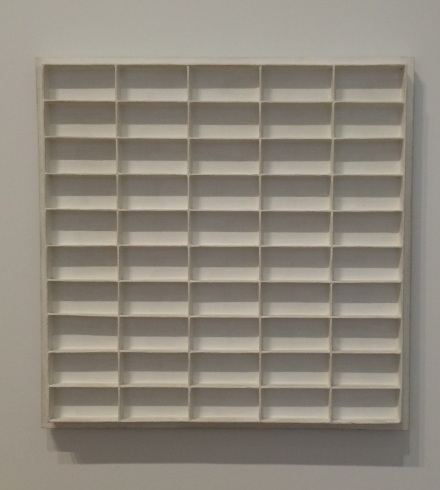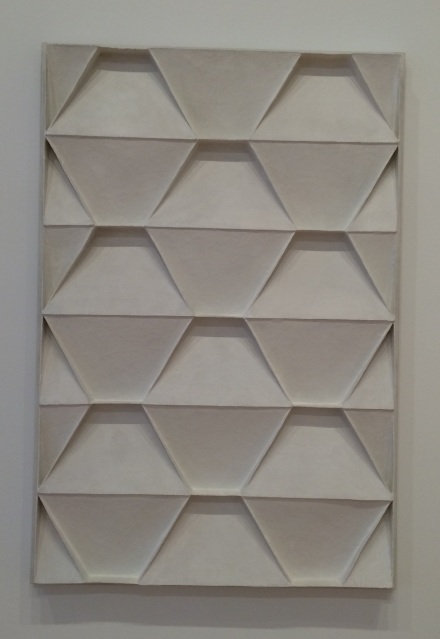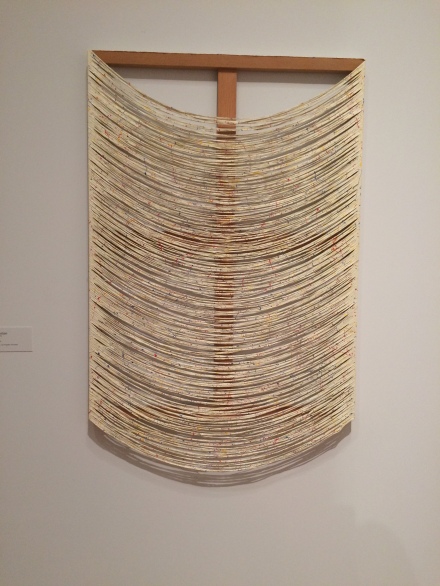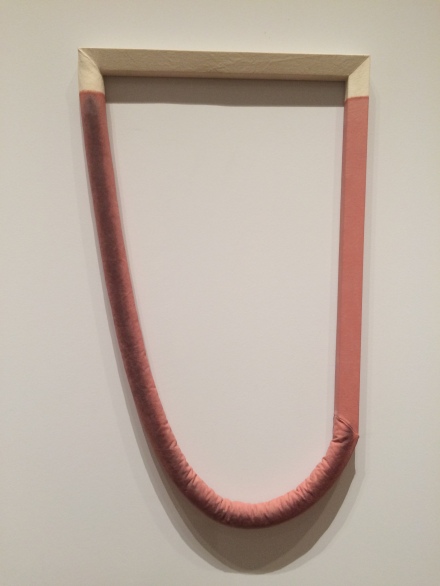Every January there are a whole host of Art and Antique Fairs in NYC. One of my favorites is the Metro Curates Show. This event features dealers that together present a broad eclectic selection: Ethnographic Art, 20th century Modernist abstract paintings, folk art, as well as new work by contemporary artists.

Constantine Karron, Untitled, 1940’s
ink on paper, 16 x 13 in.
Picture courtesy of Ricco Maresca Gallery
In the Ricco Maresca Gallery booth I found this amazing grid of drawings made in the 1940’s by Constantine Karron. These intricate works were all handmade using basic drafting tools. All but one of the 16 drawings are circles or regular polygons. The elaborate decorations feature rotational symmetries of varying degrees up to 16-fold. The precision and detail in these drawings is amazing. The only work that does not feature a circle or a regular polygon and has only 2-fold rotational symmetry is the drawing in the third column from the left, and is the third down from the top of the grid. This is a drawing of an irregular 16-sided polygon (hexadecagon) that has both horizontal and vertical lines of reflection symmetry. Ricco Maresca Gallery is displaying and selling these works as a group. Although each of the drawings is very interesting on its own, together they have an even more powerful visual impact.

Annette Cords, “Combined Operations”, 2012
handwoven jacquard tapestry
Picture courtesy of Umbrella Arts
Annette Cords’ handwoven jacquard tapestry “Combined Operations” from 2012 was on display at the Umbrella Arts booth. I was immediately drawn into their space when I saw the geodesic spheres woven into this work. Cords also creates paintings and installations all dealing with systems of information and physics. The geometry of the spheres are quite clear but the jacquard weaving technique gives the lines a nice sketch quality. The lunar background gives the work an ethereal presence.
I spoke with Umbrella Arts gallerist and curator Margaret Bodell about my interest in Art and Mathematics and she gave me a preview of some of the amazing work that will be featured in the next show at their gallery in lower Manhattan. The exhibition is titled “Off the Grid” and it will take place from February 5th to February 28th. I will definitely be heading downtown to see and review the show. I know already there will be art with interesting Mathematical connections.
Susan









